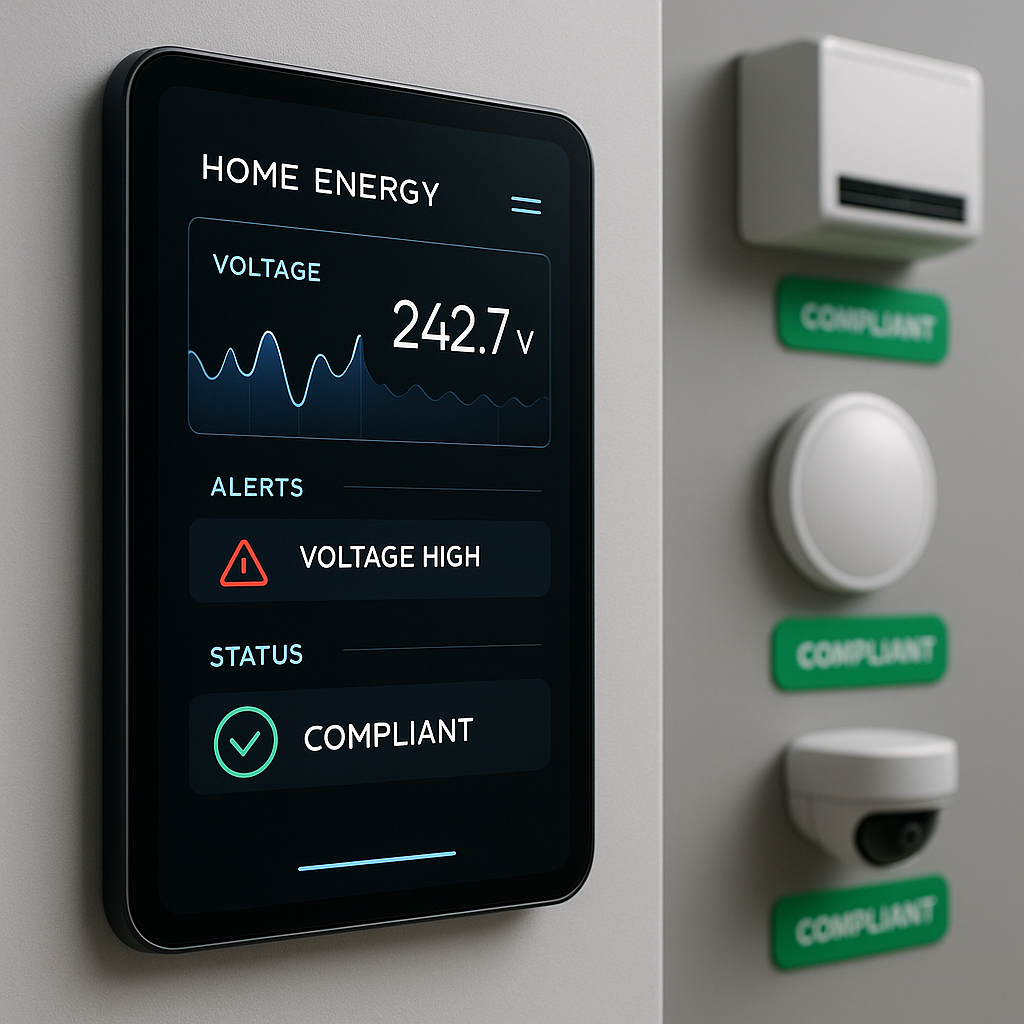
Are you thinking about transforming your living space into a high-tech smart home? From voice-activated lights to automated thermostats, smart homes are quickly becoming the standard for modern living. However, amidst the excitement of integrating this futuristic technology, one crucial factor often gets overlooked electric compliance.
Electric compliance ensures your smart home operates safely, efficiently, and adheres to local building codes. Neglecting it not only puts your home at risk but can also lead to costly fines and repairs. This blog provides a homeowner- and electrician-friendly guide to navigating smart home technology with a focus on compliance, safety, and efficiency.
Electric compliance refers to ensuring that all electrical systems, devices, and installations within a property meet local electrical codes and safety regulations. For smart homes, this means that every component from smart switches and outlets to complex home automation systems is installed and maintained according to established standards.
Compliance isn’t just about adhering to the law; it’s about safety. Proper electrical compliance in smart homes prevents accidents such as electrical fires, sparks, or system failures, making it a critical aspect of creating a tech-enabled environment you can trust.
Smart homes integrate various interconnected devices, often drawing more power than traditional appliances. Without proper compliance, these systems can become hazardous. Here's why compliance matters:
To ensure compliance, it’s important to understand the primary electrical features that power smart homes. Here’s an overview of key components:
Smart outlets and light switches are the backbone of home automation. They allow users to control lighting, appliances, and more through smartphone apps or voice commands. However:
Smart homes draw significant power as they operate multiple devices simultaneously. This puts extra load on circuit breakers.
Smart homes rely on uninterrupted power supplies for seamless operation. Unpredictable power outages or voltage fluctuations can damage sensitive smart devices. Use:
Traditional wiring setups may not support the needs of a modern smart home. For compliance and efficiency:
Creating a smart home is exciting, but it requires planning and adherence to regulations. Follow these steps to ensure compliance:
Start by understanding national and local building codes, such as the National Electric Code (NEC) in the U.S. or the IET Wiring Regulations in the U.K. These codes outline:
Hire a licensed electrician to evaluate your home’s electrical infrastructure. This step is crucial to identify upgrades needed for smart home compatibility. Some areas to address:
When purchasing smart devices, ensure they are certified by recognized organizations such as UL, ETL, or Energy Star. These certifications guarantee safety and compliance. Avoid unverified or counterfeit products that can compromise safety.
If your wiring or electrical panel can’t handle the increased power demands of a smart home, it’s time for an upgrade. Consider:
DIY installations might seem cost-effective, but they can lead to compliance violations or safety risks. Always:
Once your smart home is set up, regular maintenance and testing are key.
Even the most tech-savvy enthusiasts can overlook compliance requirements. Here’s what to avoid:
Building the ultimate smart home requires collaboration. Electricians bring technical expertise, while homeowners provide insights into their specific needs. Together, they can:
Creating a compliant, fully functional smart home doesn’t have to be overwhelming. By following the steps outlined above and prioritizing electrical compliance, you’re not just maximizing the safety and efficiency of your home but also setting the stage for a seamless smart experience.
Whether you're a homeowner looking to upgrade your space or an electrician expanding your expertise in smart home installations, staying compliant is the key to unlocking the full potential of this technology. Taking the time to plan and execute these updates properly ensures your home is safer, smarter, and future-ready.
For more tips and professional resources, explore our expert guides today. Don’t just live in your home; make it smarter, safer, and better connected.